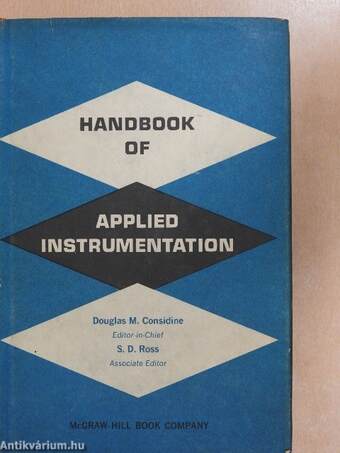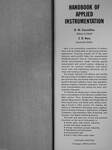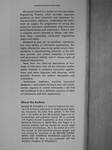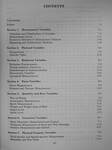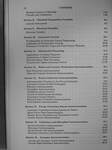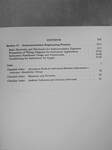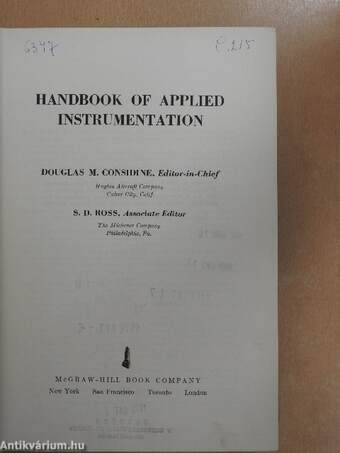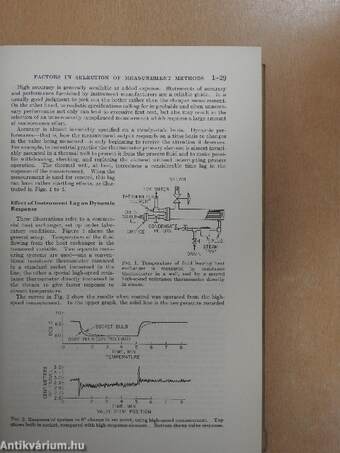1.066.445
kiadvánnyal nyújtjuk Magyarország legnagyobb antikvár könyv-kínálatát

VISSZA
A TETEJÉRE
JAVASLATOKÉszre-
vételek
Handbook of Applied Instrumentation
| Kiadó: | McGraw-Hill Book Company |
|---|---|
| Kiadás helye: | New York |
| Kiadás éve: | |
| Kötés típusa: | Vászon |
| Oldalszám: | 1.151 oldal |
| Sorozatcím: | McGraw-Hill Handbooks |
| Kötetszám: | |
| Nyelv: | Angol |
| Méret: | 23 cm x 16 cm |
| ISBN: | |
| Megjegyzés: | Fekete-fehér ábrákkal. További kapcsolódó személyek a könyvben. |
naponta értesítjük a beérkező friss
kiadványokról
naponta értesítjük a beérkező friss
kiadványokról
Fülszöveg
D. M. Considine
Editor-in-Chief
S. D. Ross
Associate Editor
Here is an outstanding compilation of authoritative and up-to-date data on instruments and their applications. Covering virtually all of the major industries and scientific fields, this comprehensive handbook presents vvhow-to" information on determining instrumentation needs; selecting specific measurement and control systems; designing instruments for minimum installation and maintenance costs; and engineering instruments into diverse and numerous systems.
This handy reference first defines and clarifies the many kinds of variables subject to instrumentation and how they can be best measured. Variables found in thermal, radiation, force, rate, geometric, physical property, chemical compostion, and electrical instrumentation are among the many characteristics discussed.
To illustrate the detail given in these discussions, here is a breakdown of the Quantity and Rate Variables section: Flow; Acceleration... Tovább
Fülszöveg
D. M. Considine
Editor-in-Chief
S. D. Ross
Associate Editor
Here is an outstanding compilation of authoritative and up-to-date data on instruments and their applications. Covering virtually all of the major industries and scientific fields, this comprehensive handbook presents vvhow-to" information on determining instrumentation needs; selecting specific measurement and control systems; designing instruments for minimum installation and maintenance costs; and engineering instruments into diverse and numerous systems.
This handy reference first defines and clarifies the many kinds of variables subject to instrumentation and how they can be best measured. Variables found in thermal, radiation, force, rate, geometric, physical property, chemical compostion, and electrical instrumentation are among the many characteristics discussed.
To illustrate the detail given in these discussions, here is a breakdown of the Quantity and Rate Variables section: Flow; Acceleration Measurement; Special Measurement; Weight and Weight Rate of Flow; Liquid Level; and Solids Level. Similar coverage is found in other sections. For instance, the section on Information Processing covers: Applications of Analog Computers; Applications of Digital Computers; Instrumentation Data Processing; and Counters and Digital Indicating Devices.
This book also gives you current and practical know-how on the use of instruments in:
• metals, glass, and ceramic industries
• pulp and paper production
• energy conversion process industries
• laboratories and pilot-plants
• environmental tests
• and in many other major areas
(continued on back flap) 1154 pages, 1000 illustrations
(confirmed from front flap)
Of special interest is a section on Instrumentation Engineering Practice which provides important guidance on basic electricity and electronics for instrumentation engineers, conditioning the instrument air supply, the preparation of wiring diagrams for instrument applications, and instrument panel board design and construction. There is also a complete section devoted to tabular and reference data, containing substantial engineering charts and tables.
Designed to give you an excellent, representative cross section of instrument applications, this highly informative, easy-to-use guide covers instrumentation in manufacturing industries; in the military, aircraft, and nuclear industries; in private and government utilities; and in various types of research laboratories.
Here, then, are clear-cut descriptions of hundreds of instrument uses; all the necessary mathematics involved in numerous instrument applications; and many diagrams and drawings which precisely illustrate the authors' discussions and evaluations.
Technicians, engineers, scientists, instrument designers — and anyone having to buy, sell, install, service, regulate or control instruments — will find this handbook to be a definitive summary of facts on instruments and their applications.
About the Authors
Douglas M. Considine is a chemical engineer by training with extensive experience in designing and applying instruments. He holds three patents in this field and is the author of over 50 technical papers on instrumentation and automatic control. He is currently with Hughes Aircraft Corporation, as their director of Marketing Planning. S. David Ross also began as a chemical engineer and has worked for several major instrument manufacturers. He is the author of a military manual on dial-indicating pressure gauges, and also assisted Mr. Considine on the PROCESS INSTRUMENTS AND CONTROLS HANDBOOK published by McGraw-Hill. Mr. Ross is now associated with The Michener Company of Philadelphia. Vissza
Témakörök
Megvásárolható példányok
Nincs megvásárolható példány
A könyv összes megrendelhető példánya elfogyott. Ha kívánja, előjegyezheti a könyvet, és amint a könyv egy újabb példánya elérhető lesz, értesítjük.



